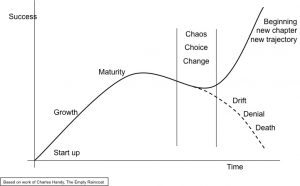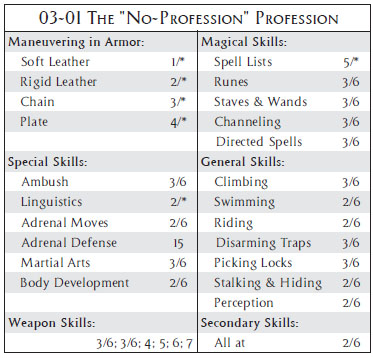I am building some real enthusiasm for this idea now. I think it is certainly achievable with a target age down towards the 10yrs old mark or even lower. Hero Kids goes down as far as 4yrs old and I just don’t think that is viable for any sort of Rolemaster-esque game. Just think of the sorts of sums we do adding open ended rolls, adding OBs, adding and subtracting positional modifiers, adding a negative DB and applying percentage based penalties from criticals or faster actions. That is beyond any reasonable expectation for someone below the age of 10 unless they were unusually gifted.
It is also almost impossible to remove those things as to not give a bonus for sneaking up behind your target before attacking is illogical as is expecting someone with a broken arm to just as good at fighting.
So to knock this idea about a bit more if the starting point for skill costs tends to be 2/6 and a 50 DPs seems to be the starting point then we can half both figures to make the numbers smaller and more friendly 25 skillpoints and one rank in a skill costs 1 skill point , every additional rank after the first each level costs 3 skill points. The 1/3 progression will vary from profession to profession but I am only planning on have 4 professions Fighter, Thief, Magician and (Lay) Healer. A fighters weapons skills would most likely cost 1/2 skill points (that is one stroke two not a half) whereas a Healers would be 4 points and the magician’s 5 per ranks.
I don’t think cultures are overly complicated and can just give a range of skills to make first level characters rounded.
The skills they would be buying would be just a core of skills without all the specialisations. This will keep the number of skills down and make real Rolemaster a much richer experience when people move on.
Skill resolution could be simplified down to partial success at (try again next round at +20) at 76 or more; success at 101 or more; absolute success at 176 or more.
I would make skills ‘rolls’ a card based system with the roll printing on the card as long with a simplified skill resolution table. Different types of cards would be available for different types of skills so the the results could be themed to provide added colour. Such as: “Partial Success: You keep talking and your audience is still listening. Try again next round at +20” for a social or influence type skill.
Intothatdarkness brought up the issue of lost or missing cards and that is easily avoided by making the cards all free PDFs that can be printed at home either on stock card or by using a glue stick to paste them on to standard playing cards.
I think that that would be simple enough to be understood by a ten year old but also Rolemaster enough for there to be a natural progression.
Opinions?


 A couple of weeks ago I mentioned Dyson’s Dodecahedron as a great source of maps. Today I thought I would mention Lloyd Neill’s occasional Death and Dismemberment blog (
A couple of weeks ago I mentioned Dyson’s Dodecahedron as a great source of maps. Today I thought I would mention Lloyd Neill’s occasional Death and Dismemberment blog (


